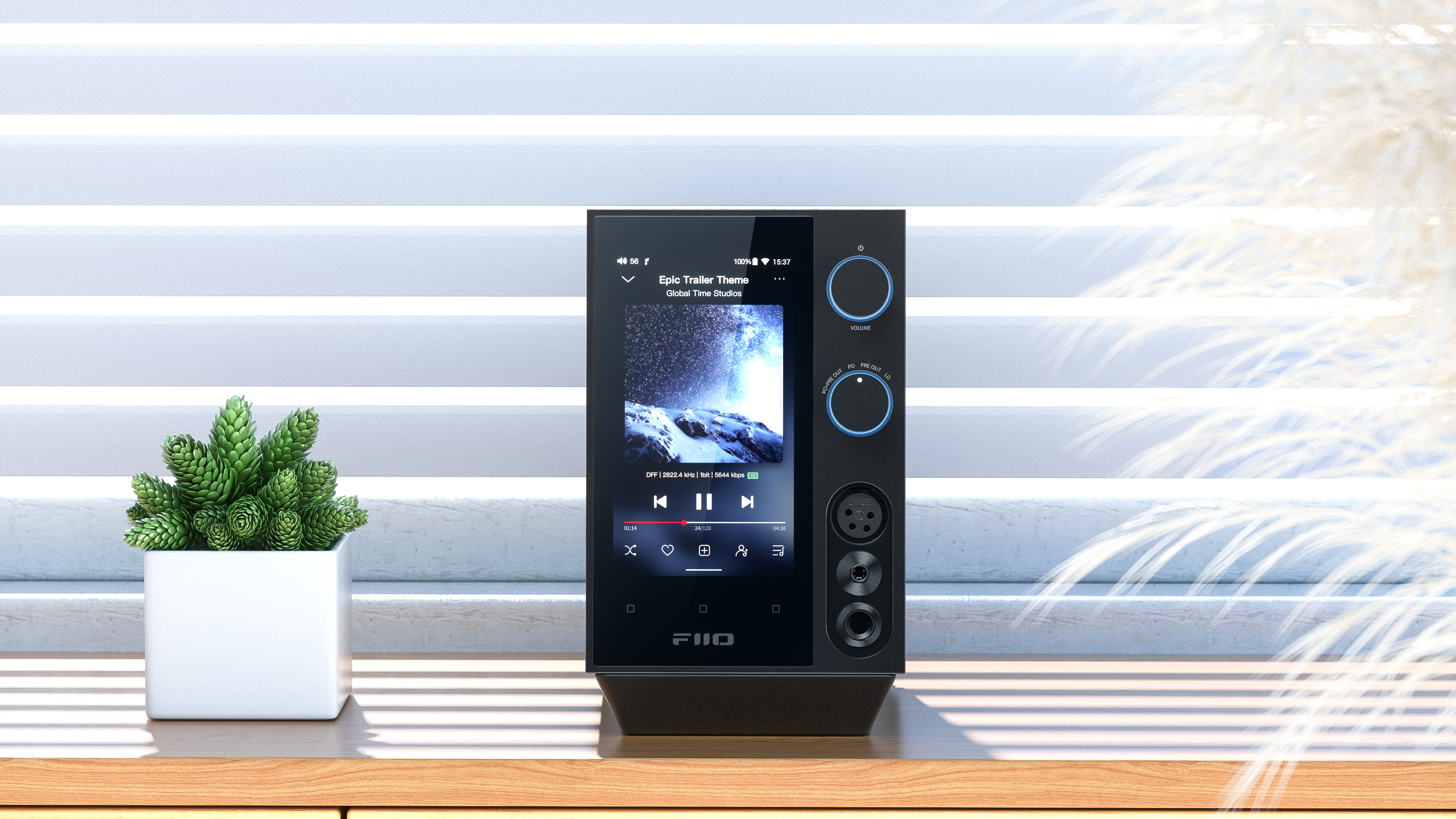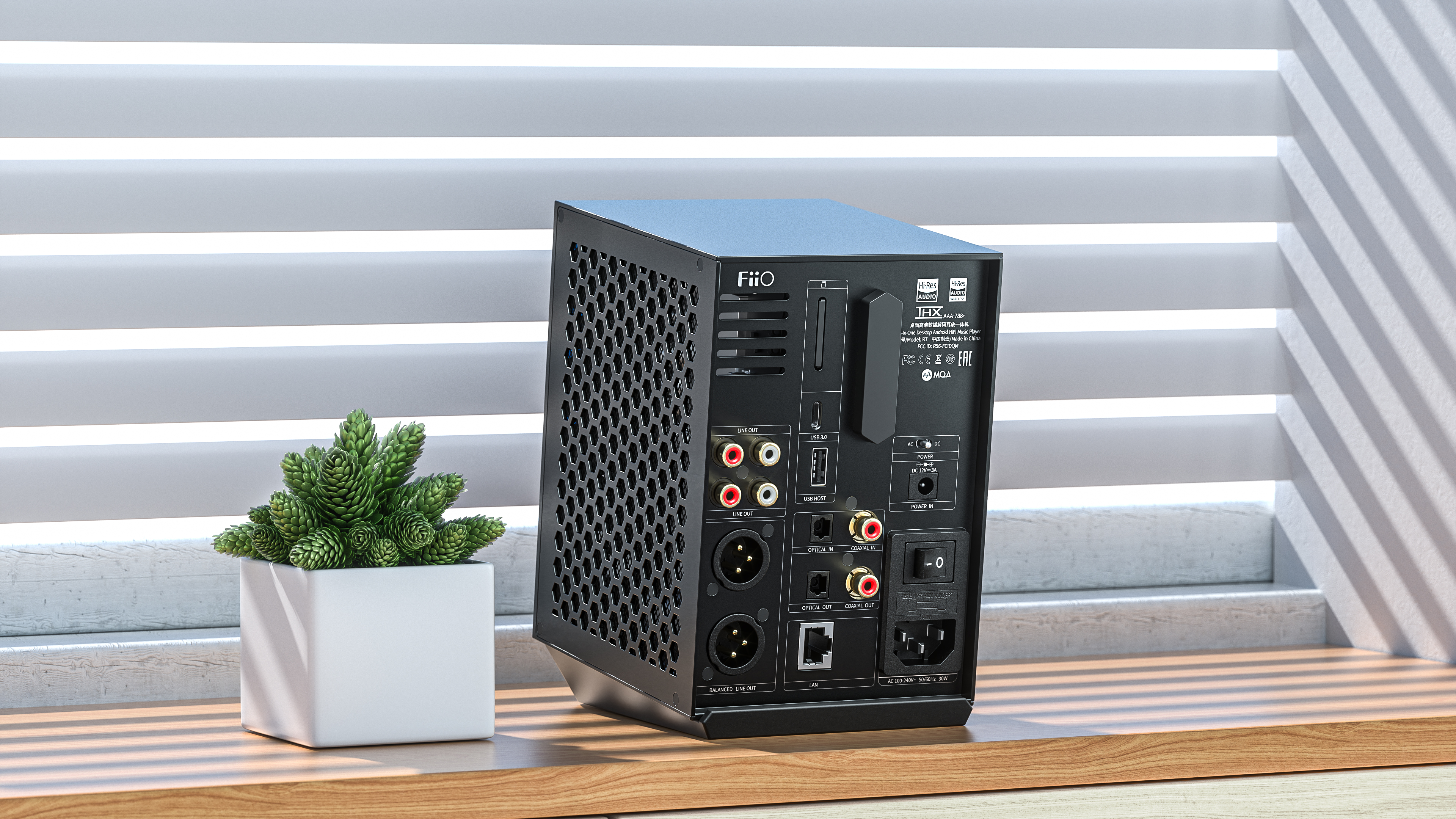The FiiO R7 is a unique hi-res desktop system for upgrading your home office and headphone audio
FiiO has launched its first-ever desktop hi-res audio player and streamer, the R7

FiiO has launched its first-desktop hi-res audio player and streamer, the uniquely designed R7, promising a serious audio upgrade for everything from home office setups to wireless headphones.
FiiO R7 features and specs
As a piece of hardware, the FiiO R7 is a bit of an oddity, with it being marketed as an all-in-one device that can be used as a digital music streamer, while also functioning as a balanced headphone amplifier.
It also supports local storage of your music files, has a touch screen, supports a wealth of hi-res audio formats including MQA, and can be used either with active speakers or headphones, or both.
As an added perk it’ll also support the FiiO SP3 Active Loudspeakers, which are set to launch at an unspecified point toward the end of the year - price to be confirmed. We haven’t seen many other devices with this level of functionality, especially at this price, which makes it one of the more interesting bits of hi-fi to arrive this year.
At a hardware level, it features some decent specs, coming loaded with ESS Sabre ES9068AS DACs and a high-power THX-788+ desktop-grade amplification chipset. The dual THX amplification system supports hi-res audio playback up to 32-bit/768kHz PCM and DSD512 files.
Connectivity-wise, there are a wealth of options for physical sources and wireless options. Round back you’ll find optical and coaxial inputs, USB ports, plus 2.4GHz and 5GHz wi-fi and Bluetooth 5.0 support. There are optical, coax, line level and balanced XLR outputs, too.
The system is Roon Ready as well, and there are plenty of additional ways to play your audio files: run files from the player’s local 64GB of storage, an attached SSD, or wirelessly via DLNA or AirPlay. The 64GB won’t last long if you have a massive hi-res library, though the device does support microSD cards up to 2TB in size, so it can be quickly and easily expanded.
The latest hi-fi, home cinema and tech news, reviews, buying advice and deals, direct to your inbox.
The use of Android 10 also means it’ll support all the standard streaming apps via the Google Play Store, including Tidal, Apple Music, Amazon Music and Spotify.
For Bluetooth streaming, the device uses Qualcomm's Snapdragon 660 chipset and supports a wide range of AAC, SBC, aptX, aptX HD, LDAC and LHDC codecs.
For headphones users, the R7 has a range of outputs: 6.3mm, 4.4 balanced, and four-pin balanced XLR connectors. The system comes with five gain levels, which FiiO claims will let it work with everything from sensitive IEMs or power-hungry over-ears, and that under a 32Ω load, the device is capable of outputting up to 3.6W – so on paper it should have enough juice to power low-and high-impedance headphones.

Fiio R7 release date and price
The FiiO R7 launched on 28 February and is available from select stores now, retailing for £649.99 / $699.99.
All this sounds impressive, but until we get the device into our listening rooms and put it through its paces we can’t attest to its performance.
However, the price and unique range of functionality put it in a niche segment of the market - to the point the team of experts at What Hi-Fi? were left scratching their heads trying to think of a direct rival to the R7.
The closest rival we could find was the Astell & Kern Acro CA1000T – a similarly hi-res and versatile desktop system with a screen (and it's also portable) – but it's much more expensive at £2299 / $2300 / AUD$3699. Those looking for a mini desktop system could also opt for the Denon D-M41DAB micro-system or the neater Elac Debut ConneX speaker system, but neither features anywhere near the same level of functionality the R7 claims to offer.
MORE
These are the best stereo amplifiers we've tested
Looking for some new wireless headphones? Check out our best wireless headphones guide
Read our best music streamers guide

Alastair is What Hi-Fi?’s editor in chief. He has well over a decade’s experience as a journalist working in both B2C and B2B press. During this time he’s covered everything from the launch of the first Amazon Echo to government cyber security policy. Prior to joining What Hi-Fi? he served as Trusted Reviews’ editor-in-chief. Outside of tech, he has a Masters from King’s College London in Ethics and the Philosophy of Religion, is an enthusiastic, but untalented, guitar player and runs a webcomic in his spare time.
